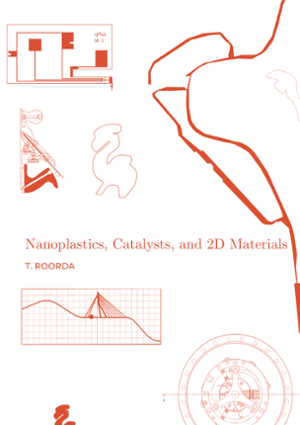Dissertation
Exploring Reactive Interfaces: Nanoplastics, Catalysts, and 2D Materials
This thesis investigates reactive interfaces in surface science across three domains: heterogeneous catalysis, environmental nanoplastics, and two-dimensional materials.
- Author
- T. Roorda
- Date
- 21 October 2025
- Links
- Thesis in Leiden Repository

A central achievement is the development of the ReactorAFM/STM, an instrument enabling simultaneous atomic force and scanning tunneling microscopy under elevated pressures and temperatures. Using this setup, catalytic reactions such as Pd(100) oxidation and Fischer–Tropsch synthesis on cobalt nanoparticles were studied under near-industrial conditions, bridging the traditional pressure and materials gaps. To address the challenge of nanoplastic pollution, new laboratory protocols were established for producing and analyzing nanoplastics on well-defined surfaces. Physical vapor deposition is introduced as a controllable route to model environmental degradation and support systematic studies of nanoplastic behavior.Finally, the controlled growth of hexagonal boron nitride (h-BN) on Ni(111) using a novel molecular precursor was investigated through synchrotron-based spectroscopy and microscopy, revealing key aspects of 2D-material formation.Together, these studies demonstrate how advanced microscopy and operando experimentation can reveal processes at surfaces under realistic conditions, contributing to both fundamental science and environmental understanding.
